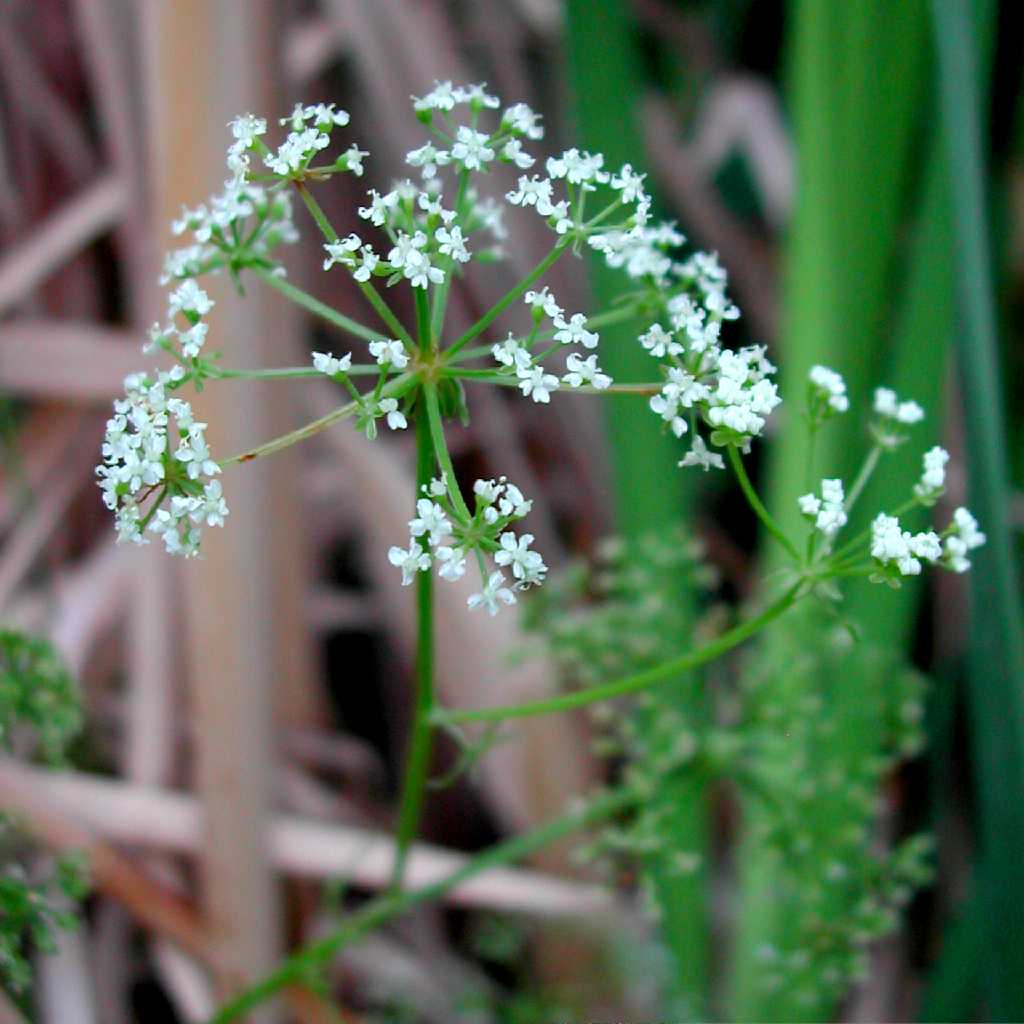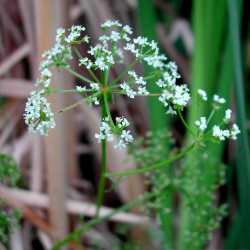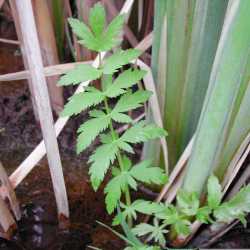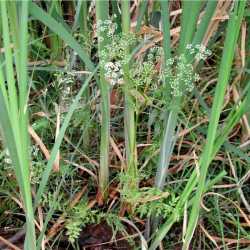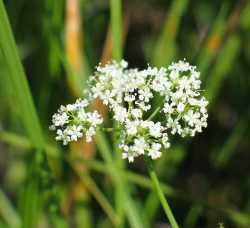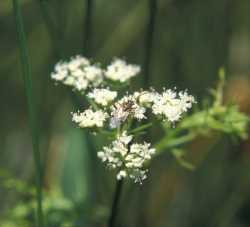Duration: Perennial
Nativity: Native
Lifeform: Forb/Herb
General: Glabrous perennial herb from fibrous roots; stems weak, usually supported by other plants, erect to ascending, to 1 m tall, branched, hollow, rooting at the lower nodes.
Leaves: On petiole 4-12 cm long, narrowly sheathing, blade 15 cm long, narrowly oblong, 1-pinnate, with leaflets in 7-12 pairs, these 1-8 cm, oblong to ovate, sessile, lobed to serrate.
Flowers: Compound umbel, on long peduncle, terminal or axillary, with lanceolate bracts; pedicels spreading and unequal; flowers with minute calyx lobes and wide white petals; stylopodium depressed-conic.
Fruits: Capsule splitting into 2 single seeded mericarps, nearly round, compressed side to side, 2 mm, glabrous, with thread-like ribs and numerous oil tubes.
Ecology: Found in slow moving water or along streams from 4,000-9,000 ft (1219-2743 m); flowers June-October.
Distribution: A cosmopolitan species; most of N. Amer. except for southeastern states; also in Africa, Europe and Australia.
Notes: Find this species where there is surface water; it-s distinguished by the umbels of white flowers and the lush, glabrous, 1 x pinnate leaves, similar to broad leaf parsley in appearance, which are often growing upright from the base of the plant and also along the weak, herbaceous stems.
Ethnobotany: Used externally for treatment of rheumatism and athletes foot. There is at least one report of a tribe using it for food, but other sources report it is poisonous and should not be consumed.
Etymology: Berula simply means -herb- in Latin, while erecta means upright.
Synonyms: Berula erecta var. incisa, Berula incisa, Berula pusilla, Siella erecta
Editor: SBuckley 2010, FSCoburn 2015, AHazelton 2015
Stem sparsely branched, to 8 dm; lvs oblong, the 9-23 lfls lanceolate to oblong or ovate, serrate or lobed, those of the upper lvs commonly lanceolate and deeply incised; rays 5-15, 1-3 cm; umbellets 1 cm wide; fr 1.5-2 mm, rarely maturing; 2n=12. Springs, bogs, and shallow water; N.Y. and s. Ont. to Minn. and B.C., s. to Fla. and Mex.; Europe and the Mediterranean region. June-Sept. The Amer. plants are var. incisa (Torr.) Cronquist. (B. pusilla)
Gleason, Henry A. & Cronquist, Arthur J. 1991. Manual of vascular plants of northeastern United States and adjacent Canada. lxxv + 910 pp.
©The New York Botanical Garden. All rights reserved. Used by permission.


